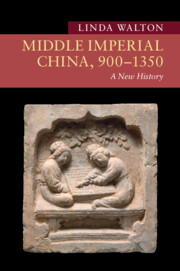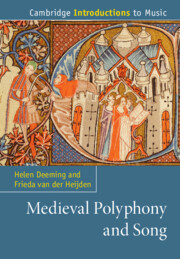Refine search
Actions for selected content:
73 results
Chapter 7 - Michael Field and Lyric
- from Part II - Forms and Genres
-
-
- Book:
- Michael Field in Context
- Published online:
- 03 October 2025
- Print publication:
- 25 September 2025, pp 59-67
-
- Chapter
- Export citation
Chapter 41 - Tragedy
- from Part VI - Critical Understandings
-
-
- Book:
- Sean O'Casey in Context
- Published online:
- 23 June 2025
- Print publication:
- 10 July 2025, pp 445-453
-
- Chapter
- Export citation
Chapter 29 - Lyric
- from Part III - Writings
-
-
- Book:
- Percy Shelley in Context
- Published online:
- 17 April 2025
- Print publication:
- 24 April 2025, pp 220-227
-
- Chapter
- Export citation
‘The pieces that are in the hands of everyone belong to the public’: Philippe-Emmanuel de Coulanges, Song Games and Operatic Artefacts in Seventeenth-Century Paris
-
- Journal:
- Cambridge Opera Journal / Volume 36 / Issue 3 / November 2024
- Published online by Cambridge University Press:
- 26 December 2024, pp. 314-350
-
- Article
-
- You have access
- Open access
- HTML
- Export citation
Chapter 2 - The Local Environments and More-Than-Human Music of the Eclogues
-
- Book:
- The Environmental Poetry of Augustan Rome
- Published online:
- 12 December 2024
- Print publication:
- 19 December 2024, pp 60-97
-
- Chapter
- Export citation
1 - On Clare and Lyric Song
- from Part I - Clare the Poet
-
-
- Book:
- The Cambridge Companion to John Clare
- Published online:
- 14 November 2024
- Print publication:
- 21 November 2024, pp 17-29
-
- Chapter
- Export citation
2 - Clare’s Forms
- from Part I - Clare the Poet
-
-
- Book:
- The Cambridge Companion to John Clare
- Published online:
- 14 November 2024
- Print publication:
- 21 November 2024, pp 30-45
-
- Chapter
- Export citation
3 - Poem/Song
- from Part I - Ideas of the Poem
-
-
- Book:
- The Cambridge Companion to the Poem
- Published online:
- 30 May 2024
- Print publication:
- 06 June 2024, pp 49-66
-
- Chapter
- Export citation
Chapter 27 - Song and Choral Music
- from Part V - The Music of Debussy’s Time
-
-
- Book:
- Debussy in Context
- Published online:
- 23 May 2024
- Print publication:
- 23 May 2024, pp 248-257
-
- Chapter
- Export citation
The Niu–Li Factional Strife: The Origins of a Historiographical Fiction
-
- Journal:
- Journal of Chinese History / Volume 9 / Issue 1 / January 2025
- Published online by Cambridge University Press:
- 21 May 2024, pp. 84-111
-
- Article
-
- You have access
- Open access
- HTML
- Export citation
Chapter 15 - Poetry in Indigenous Languages: From the Sixteenth to the Twenty-First Centuries
-
-
- Book:
- A History of Mexican Poetry
- Published online:
- 21 March 2024
- Print publication:
- 21 March 2024, pp 275-293
-
- Chapter
- Export citation
Introduction
-
-
- Book:
- The New Cambridge History of Japan
- Published online:
- 15 January 2024
- Print publication:
- 23 November 2023, pp 1-12
-
- Chapter
- Export citation
8 - The Power of Song in Beach’s Orchestral Works
- from Part II - Profiles of the Music
-
-
- Book:
- The Cambridge Companion to Amy Beach
- Published online:
- 19 October 2023
- Print publication:
- 02 November 2023, pp 154-179
-
- Chapter
- Export citation
44 - The Demotion of the Literary Cowherd (2019)
-
- Book:
- Essays on Ancient Greek Literature and Culture
- Published online:
- 10 October 2023
- Print publication:
- 27 July 2023, pp 884-890
-
- Chapter
- Export citation

Middle Imperial China, 900–1350
- A New History
-
- Published online:
- 20 July 2023
- Print publication:
- 03 August 2023
Chapter 1 - Introduction and Historical Outline
-
- Book:
- Medieval Polyphony and Song
- Published online:
- 27 April 2023
- Print publication:
- 11 May 2023, pp 1-10
-
- Chapter
- Export citation

Medieval Polyphony and Song
-
- Published online:
- 27 April 2023
- Print publication:
- 11 May 2023
2 - The Substance of Song: Music in Homer and the Homeric Hymns
- from Part I - Bodies
-
- Book:
- Greek Poetry in the Age of Ephemerality
- Published online:
- 02 June 2023
- Print publication:
- 27 April 2023, pp 69-96
-
- Chapter
- Export citation
4 - Situating Simonides: Stones, Song, and Sound
- from Part II - Texts
-
- Book:
- Greek Poetry in the Age of Ephemerality
- Published online:
- 02 June 2023
- Print publication:
- 27 April 2023, pp 135-164
-
- Chapter
- Export citation
Martin Luther and the metaphysics of music
-
- Journal:
- Scottish Journal of Theology / Volume 76 / Issue 4 / November 2023
- Published online by Cambridge University Press:
- 17 April 2023, pp. 357-368
- Print publication:
- November 2023
-
- Article
-
- You have access
- Open access
- HTML
- Export citation
